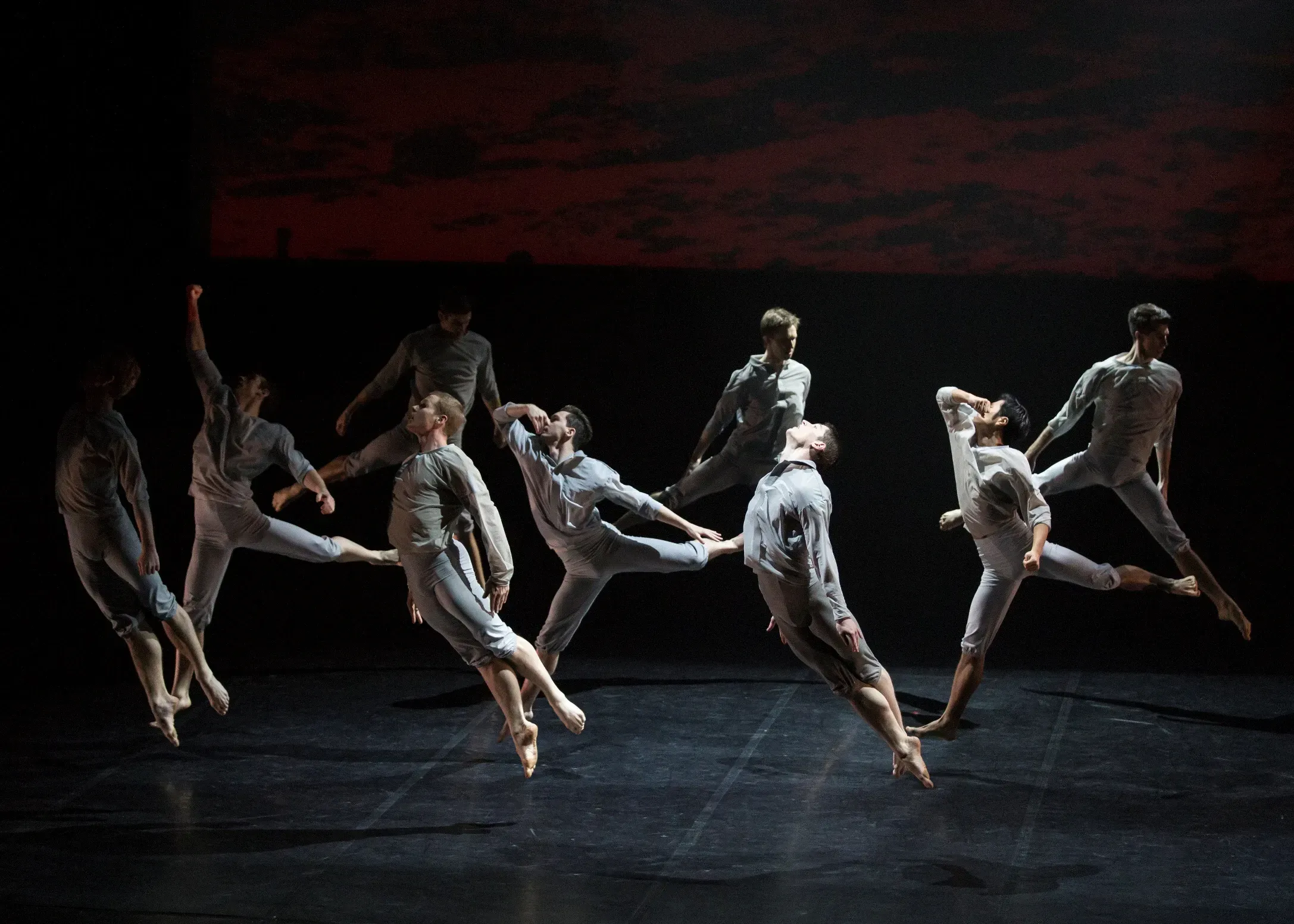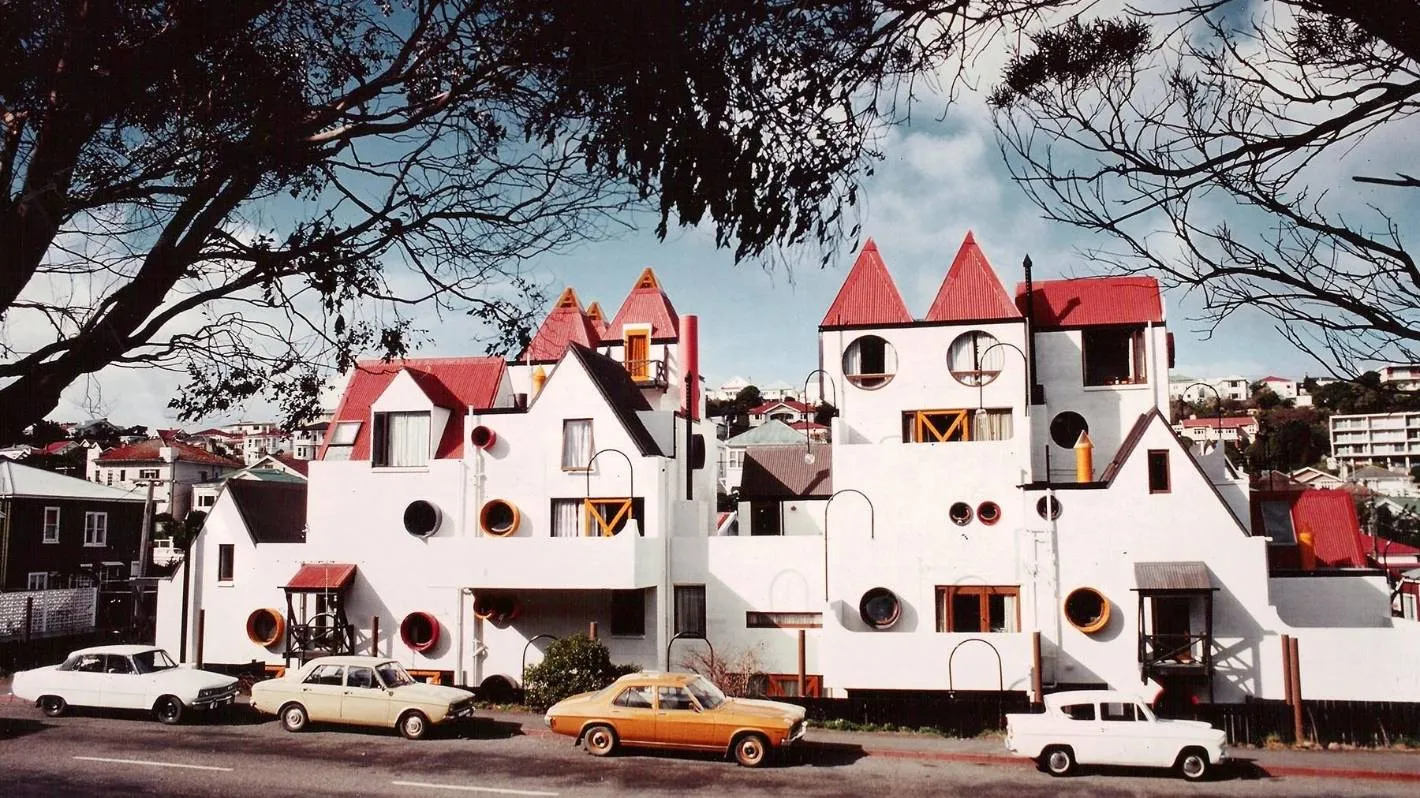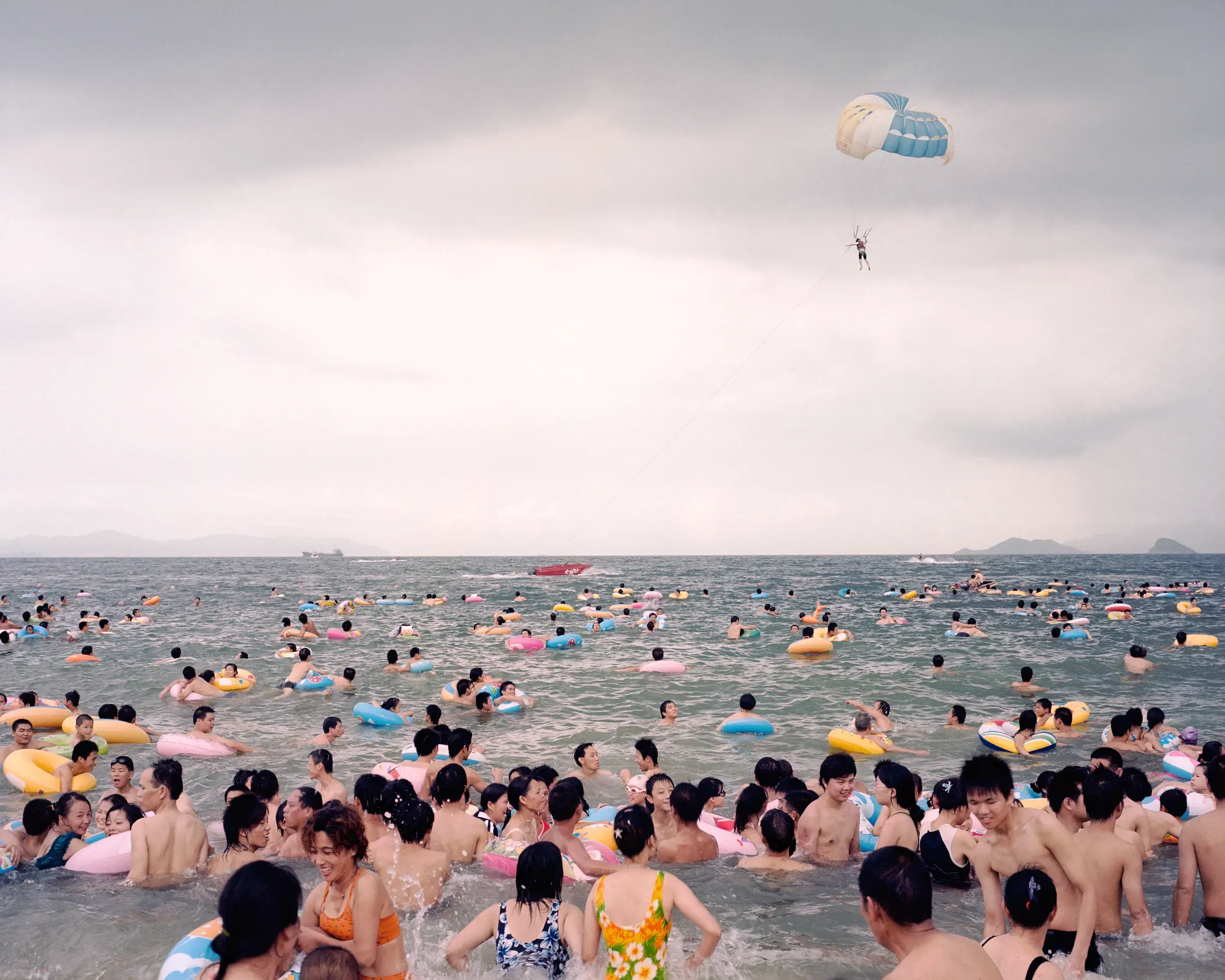What Level Two Means to You (and the News isn't Getting Better)
Written by
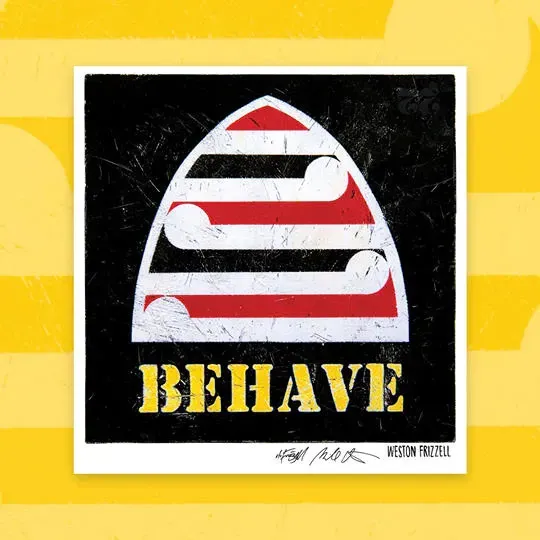
Standing Room Only: Level Two Trickiness
This week’s announcement of an increase to 100 in public gathering numbers is some good news for small theatre presenters and companies nationwide. That’s from regional tourers to venue icons like Basement, the Classic and Q in Auckland, and BATS in Wellington, where 100-seater theatre is typical (here’s a great interview with BATS’s Jonathon Hendry on Stuff). Yet live shows (with added new restrictions) don’t come together overnight and as I write, I’ve yet to see reopening dates announced.
And for both bigger companies and small music venues - needing to pack people in standing for popular shows to cover costs, level 2 is far trickier.
This Sunday saw the return of RNZ’s (currently rather appropriately-named) arts show ‘Standing Room Only’. Lynn Freeman spoke to executive director Lester McGrath about scenarios in terms of Royal New Zealand Ballet resuming touring. RNZB often performs to audiences of over 1000, so level 2 is not right for them. Best case scenario, McGrath says, is level 1 beginning by the start of July, allowing the company to start a seven-centre tour of Venus Rising from 20 August.
That’s the bright news over and done with. Only three major performing arts organisations have the cushion of direct funding from government (Te Matatini, RNZB and NZSO). As McGrath commented to Freeman, the arts sector has been “hit hard, hit early and will be one of the last to come back”. Even as restrictions lift, audiences are unlikely to feel confident about returning to venues quickly, at least without a major funded PR push.
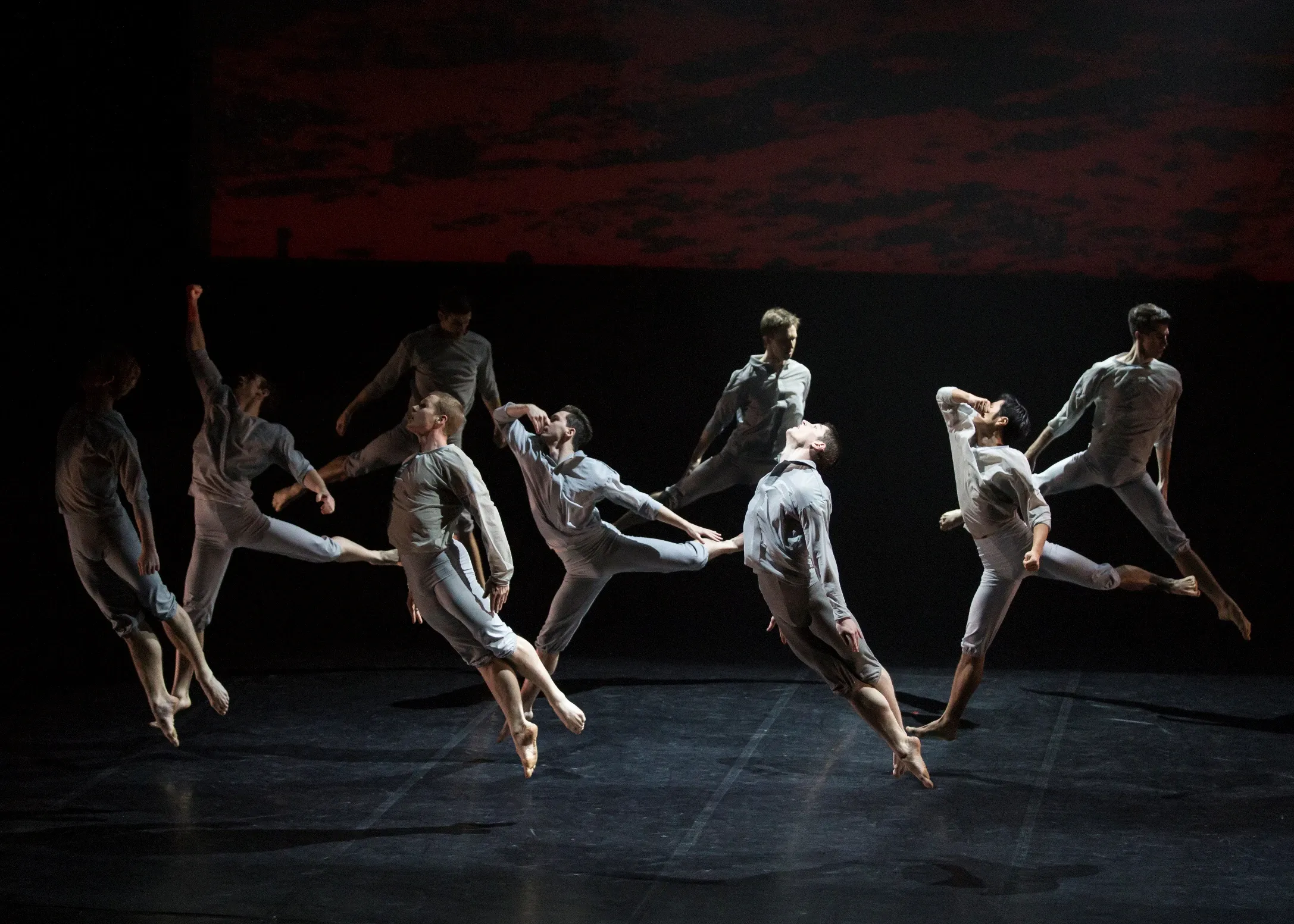
RNZB Dancers in Passchendaele by Neil Ieremia. Image: Ellie Richards.
McGrath previously headed Auckland Theatre Company, so has an experienced eye on the fortunes of the rest of the sector. Of particular concern he says are venues run by independent trusts rather than local authorities, like Christchurch’s Issac Theatre Royal and Q Theatre. Both have crowdfunding campaigns running, and at the time of writing on Boosted were both hitting almost $80,000 in funds raised. In Sydney, this scenario saw major arts venue Carriageworks go into voluntary administration over lockdown. Now the Sydney Morning Herald reports the venue has had a reprieve, with private donors collectively pledging more than two million.
Small music venues are far from out of the woods yet. Such venues thrive on packed gigs where people actually enjoy rubbing shoulders. On Monday, Stuff published this substantial feature on the state of play for the likes of Whammy Bar/Wine Cellar in Auckland and Meow and San Francisco Bathhouse in Wellington. These are but a few of the 29 independent venues currently crowdfunding through the Save Our Venues campaign. As San Fran owner Tim Ward notes, musicians rely on a string of venues running to make a tour affordable. The wage subsidy and $50,000 thus far raised through Save Our Venues has allowed San Fran to cover its lease costs until mid-June, Ward says, when he hopes level one might kick in.
Where is the Government?
So, no question, the performing arts are being hit hard and Prime Minister Jacinda Ardern stated herself at the announcement of the Ockham New Zealand Book Awards winners that, “The arts should be at the centre of our revitalisation.” Three days later, Friday 15 May came the budget announcement, with Grant Robertson in his speech noting sector recovery packages for the arts and sports, and that details would “be announced in the coming days.” Indeed the announcement for sport came on the following Monday.
The arts? Two weeks on (except for these items on budget day) we’re still waiting, with no explanation. The government speaks of the centrality of arts in our lives but it's hard yet to see the policy or resources to match. Whatever the budget arts package delivers, it will be rescue recovery; I doubt yet we will see a vision for how arts and culture can be better embedded in our plan for the future.
Perceptions of Value
There are also some basic business arguments to be made. This week The Australian reported that 68% of Australians wrongly assume that coal-mining employs more people than the creative arts. In Australia, the creative arts employ 193,000 and coal mining 49,000. Would you be among them? Furthermore, would the New Zealand media actually publish a story like this one in The Australian? We have a perception of value issue.
In 2015, Creative New Zealand and the Ministry of Arts, Culture and Heritage created an economic profile of the arts. It noted that in 2013, a total of 14,600 people were employed in arts-related industries. This compared in the 2013 census to 5883 in mining and 13,752 in ‘electricity, gas, water and waste services.’
The New Zealand racing industry over the 2016-17 year sustained 14,398 jobs. On budget day that industry got $72.5 million in emergency support. How is it conscionable to provide this and leave the arts sector still hanging?
The Threat to Museums and Galleries

Sergey Dolzhenko, Nationalist parties attend the March of National Pride in Kiev, 2017 Photo: European Pressphoto Agency/Sergey Dolzhenko.
In a NZ Herald World story this week, UNESCO and ICOM (the International Council of Museums) issued a joint statement that they believe 13% of the world’s museums may not reopen, with a particular concern for those in poorer countries. "It is alarming data that we are giving," Ernesto Ottone, Assistant Director General for Culture at UNESCO said in an interview with the Associated Press. What the NZ Herald (or any other major media player) are not doing however is looking at the situation in New Zealand.
Many may be local authority funded, but they are not sitting easy. Firstly, a number rely on some money at the door (programmes that have been troubled). Take the $20 entrance fee charged for international visitors to Auckland Art Gallery since 2018, instigated to meet funding shortfalls. Perhaps it’s no wonder (if much lamentable in terms of public facilities) that Auckland Art Gallery, run under Regional Facilities Auckland, won’t reopen until 13 June when it has had time to market a big new ticketed international exhibition, Civilisation, Photography, Now (Image above from the exhibition).
Thoughts also go to the Govett-Brewster Art Gallery and Len Lye Centre in New Plymouth where on top of a reliance on a visitor entrance fee put in place two years ago, council have dropped their funding by $400,000 to pay for infrastructure projects.
Yet as one Lowdown correspondent noted to me, at least the Govett-Brewster now has certainty and can plan, plus it’s drop at this point is only for one year and less than 10% of their budget. There are fears that things could get far worse for facilities under local authorities elsewhere where 2020-21 funding agreements have not been signed.
That concern is out there in Auckland, where many public galleries, museums and other arts organisations are independent - not umbrellared by Regional Facilities Auckland - reliant on funding agreements with council, rather than being direct employees. They are currently vulnerable as Mayor Phil Goff announced the need for an emergency Auckland Council budget for 2020-2021, which is only just going out for public consultation (on the back of his announcement of expected redundancies and a $550 million revenue shortfall ). Those funded on a year-to-year basis may be waiting until at least August to get a new funding agreement for a financial year that begins July 1.
“Regardless of whether there will be cuts to arts funding,” writes the head of one arts organisation to me, “the simple fact that we won't see any funding until at least August is going to create some serious hardship for a lot of organisations.
It should be noted that not included in this situation are four companies who get multi-million dollar funding through regional amenities; Auckland Theatre Company, Auckland Philharmonia, NZ Opera and Auckland Festival. Their funding was secured back in late April when the council’s emergency committee approved a levy for the 2020-2021 financial year.
Overall the next year is likely to highlight across the arts sector, given the huge vulnerability of the infrastructure to the whims of different councils and council structures and a stated interest in increasing access to the arts, what central government can do to make things more equitable and less vulnerable.
Creative New Zealand Response
The government’s recovery package is likely to see at least a one-off increase of funding to CNZ. This has been indicated by Arts Council Chair Michael Moynahan. Leading figures in the sector have recently argued for a doubling of the current grant, permanently.
Creative New Zealand confirmed this month that in just four weeks, they have invested almost eight million of an available $16 million through Phase 1 of their COVID-19 Emergency Response Package. This led to them also deciding to bring forward the closing date for applying for both an Emergency Relief Grant and the Arts Continuity Grant to 29 May. Will they be left funding work usually covered by councils?
“The need,” CNZ wrote earlier this month, “has exceeded all expectations and reflects COVID-19’s huge negative impact on the arts sector, with the organisation receiving and processing more applications in the last four weeks than it would normally process in an entire year across all its funding programmes.”
So, who got funded? The results as usual with CNZ are revealing in terms of upcoming arts projects and can be found here. I notice among them some grants for key organisations and venues, some of whom fell outside investment client status with CNZ last year: Sound and Light Exploration Society (Wellington’s experimental music venue Pyramid Club), Kia Mau Festival and the Auckland Festival of Photography, Auckland Fringe, Going West, and Nightsong Theatre productions.
Exits and Entrances

Angela Newell, Great South departing Creative Arts manager. Photo: Supplied.
A big shout out in the south to Ange Newall who, after 20 years growing the arts in Southland, has stepped down as Great South Creative Arts manager with the ILT Foundation. During her time in the role, Newell had among many other things got behind 11 Southland Arts Festivals, 15 ILT Kidzone Festivals and 20 Shakespeare in the Park productions.
In Christchurch, Court Theatre has gone inhouse to appoint its new artistic director, Daniel Pengelly who first started working with the company as a performer 16 years ago. Pengelly replaces Ross Gumbley who was in the role for 14 years and is now working as an advisor on the new CBD home for the Court. Pengelly had been operating as interim artistic director, with plans to look further afield have been scuttled by COVID. “We were planning to go to market for our new AD back in March, but the pandemic overtook our well-laid plans,” Chief Executive Barbara George said in a statement. “This appointment reflects what The Court needs both now and over the next three years as we all work in a new normal, and continue our plans for our move into the City and our new home.”
Meanwhile, in the visual arts, a key public space St Paul St Gallery in Auckland has a new curator (in the role formerly known as Assistant Director), Cameron Ah Loo-Matamua. Loo-Matamua has worked on two previous major St Paul Street projects and was a 2017 Education Intern at Artspace Aotearoa. “St Paul St's legacy of supporting contemporary artistic practice and critical discussions concerning Aotearoa and the Pacific, has been very influential toward my practice,” they write. Loo-Matamua takes over from Balamohan Shingade who finished in the role as lockdown loomed on 20 March.
Father and Sons
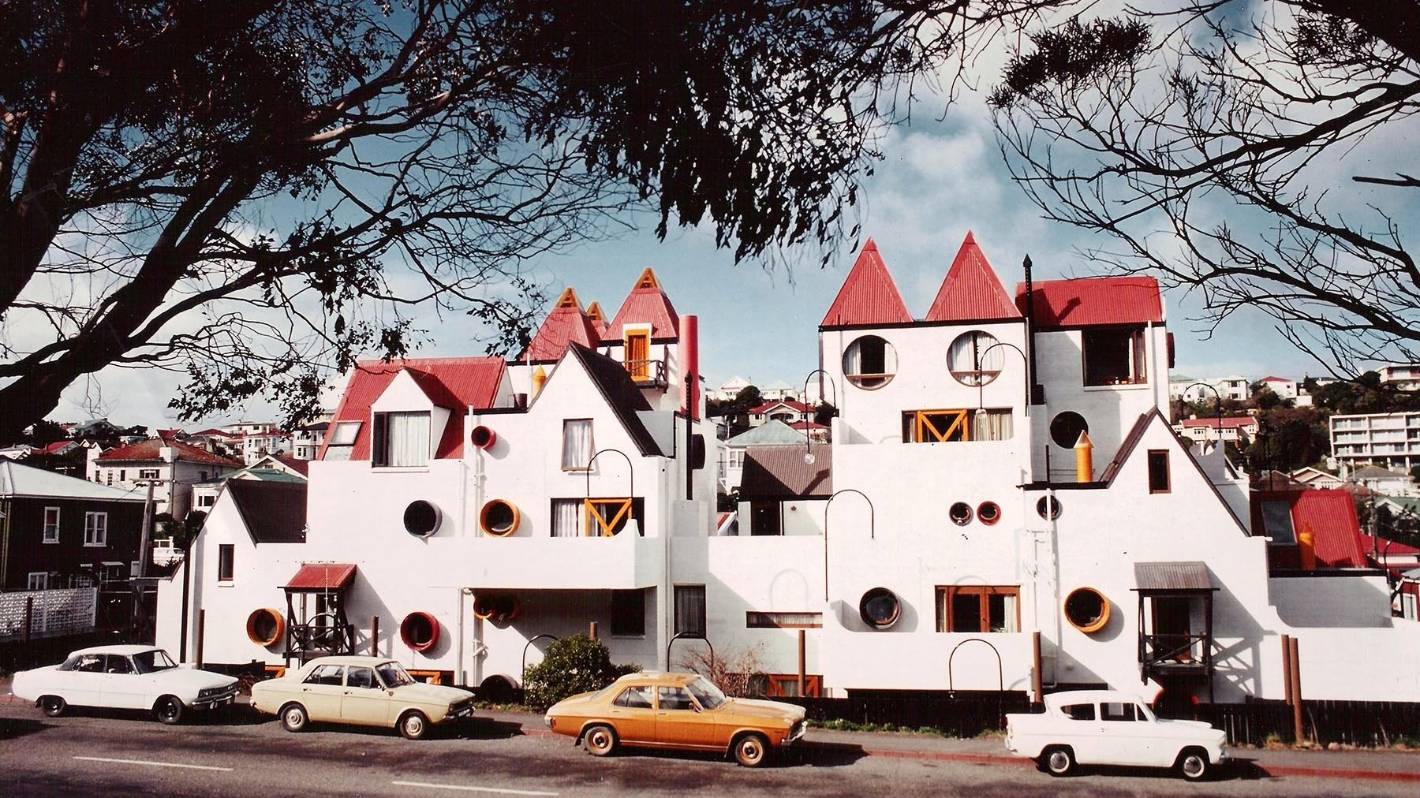
Park Mews apartments, Wellington, architect Roger Walker.
“Good cities to me are a library of books,” says architect Roger Walker, commenting on how changes in town planning negatively affected his past practice. “There's nothing wrong with having an Art Deco building next to a high tech building. But there is this feeling of homogeneity now, which I find quite negative and a little dispiriting.” Walker is talking in this Stuff story about his return to painting, something he joins his son Jake Walker in as colleague.
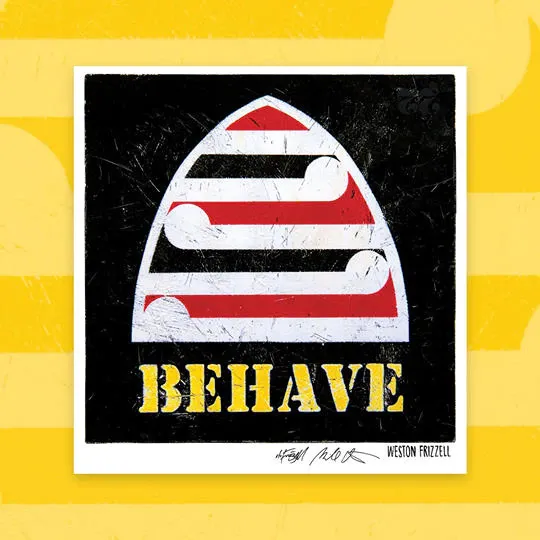
‘Behave Beehive’, Otis Frizzell and Mike Weston.
Speaking of father/son artists combos, I couldn’t resist featuring this current print from son of Dick Frizzell, Otis Frizzell with Mike Weston. ‘Behave Beehive’, follows very firmly in Dick’s footsteps in terms of smart witty appropriation with contemporary currency, but with issues of Māori co-option (notably Dick’s 1997 ‘Mickey to Tiki’). Expect to see this everywhere, alongside Frizzell Weston’s ‘Tututables’ but surely with some concern. I wouldn’t mind the mash-up if there could be some acknowledgement of the source. Some good reading to put this in fresher contemporary context: an interesting Pantograph Punch piece by Anna McAllister on the ‘Māori-fication’ of Jacinda Adern, by Māori artists.
Language and Lyrics
Under Cover is a new short web series co-presented by The Spinoff and RNZ Music (with CNZ support) where two musicians talk and each cover one of each other’s songs. The first is a welcome chance to see lockdown performances by Nadia Reid and Reb Fountain, who both have new albums out.
Peter Simpson has just released the second volume of his McCahon biography, Is This the Promised Land with Auckland University Press. Here is a review from Graham Reid.
In the latest excellent Artist in Residence podcast series over on Pantograph Punch, Journalist and poet Mohamed Hassan has made an audio experience for when you’re having trouble falling asleep.
As I write, it’s Samoan language Week and very welcome is this beautiful article on e-tangata by Patrick Thomson about the complicated relationship Samoan New Zealanders have with Samoan culture through language.
Speaking of Civilisation, Photography, Now at Auckland Art Gallery as we were earlier, the curators William Ewing and Holly Roussell have written of the ironies involved in their plans for the show to open earlier in the year being scuttled, here.
Finally, as a few great online New Zealand theatre projects continue to launch, it was great to see Te Pou Theatre in Auckland making a difference with work that plays to theatre’s strengths - the live experience. They have been touring their Front Yard Festival to private residences, with a focus on those not able to get out. And as this Stuff story shows that included a front row seat to the woman who received hate mail from a neighbour calling her an "embarrassment to Ponsonby". And people ask whether theatre has a future!
